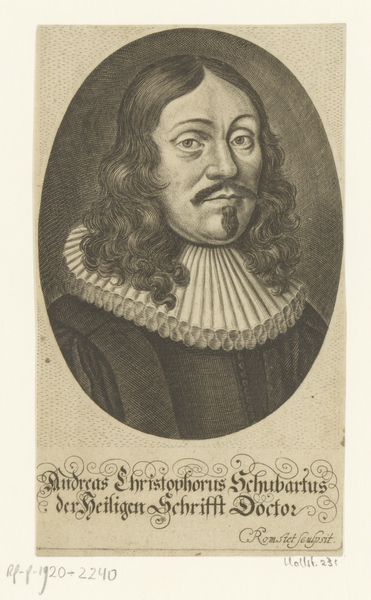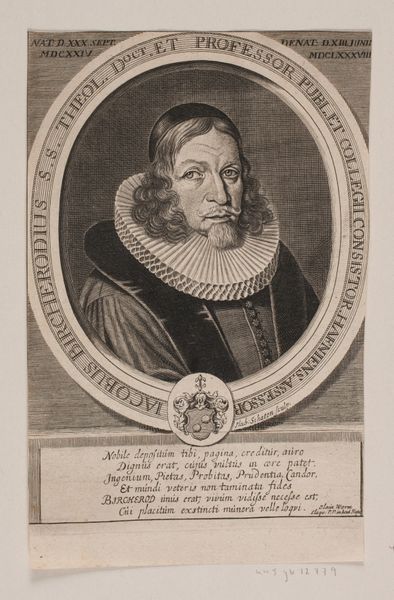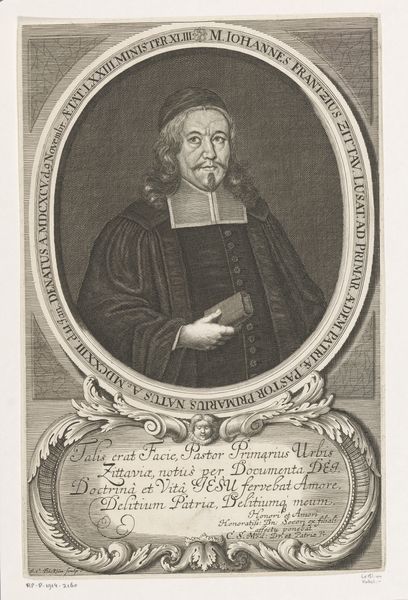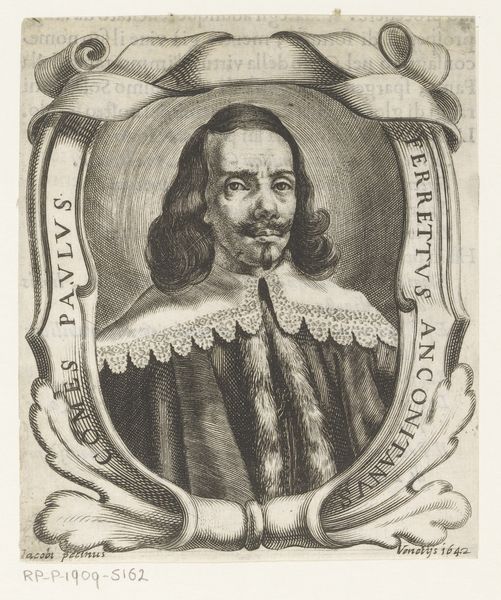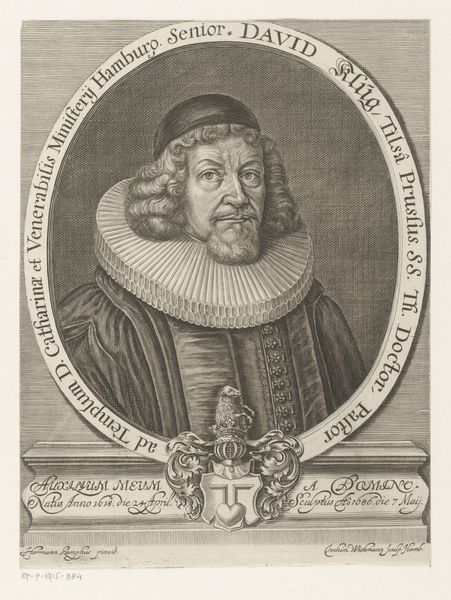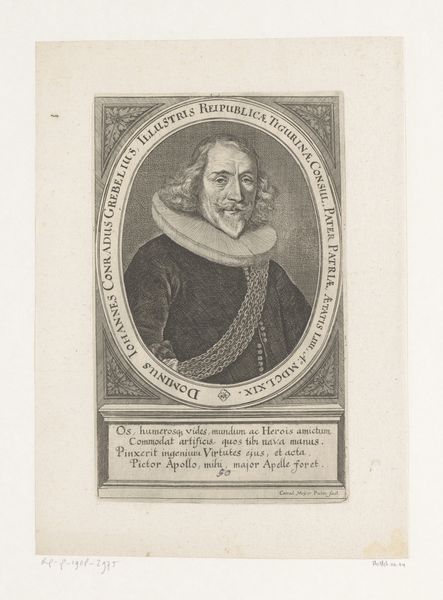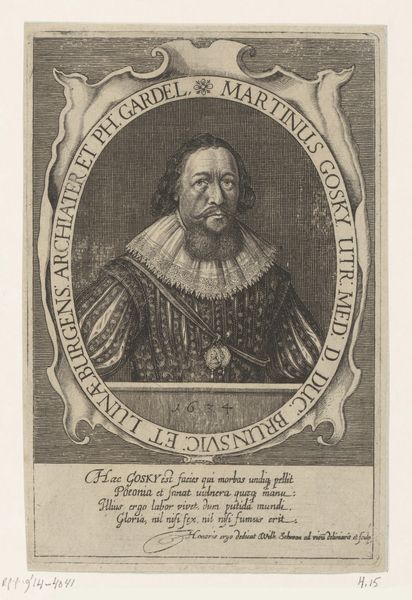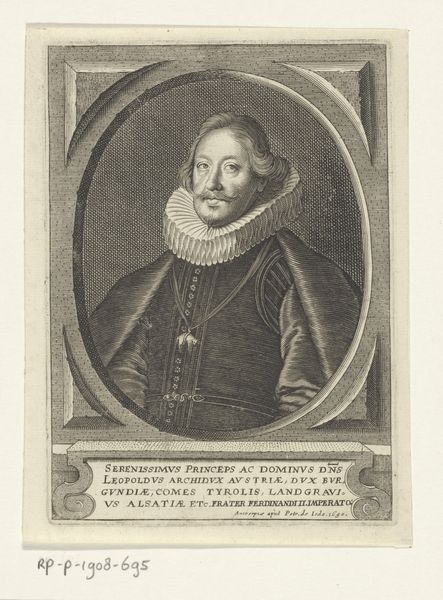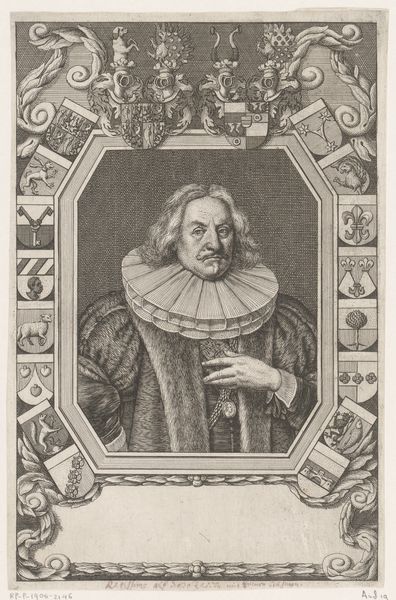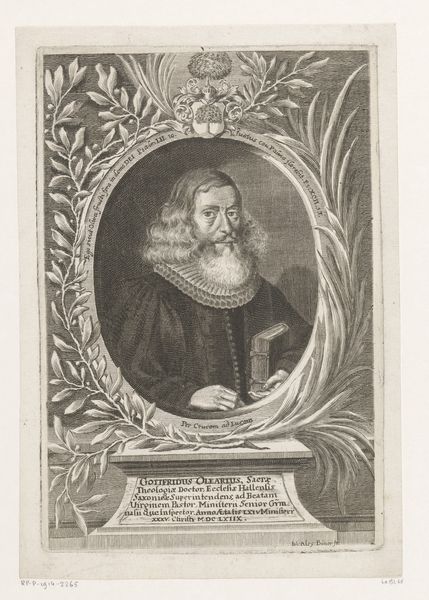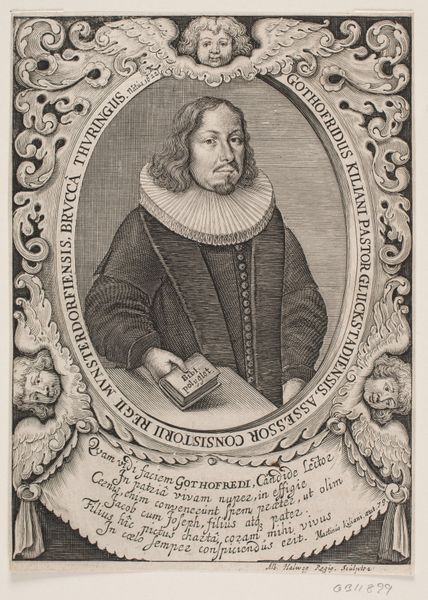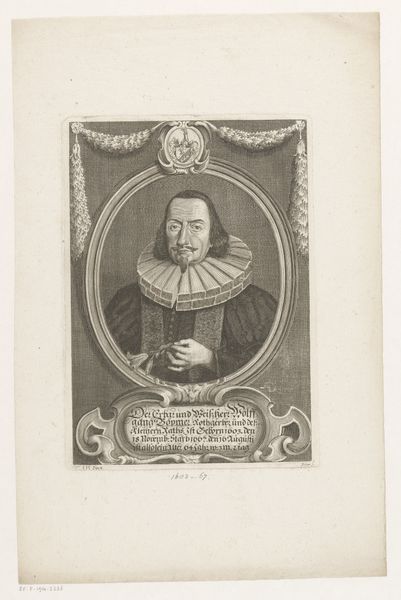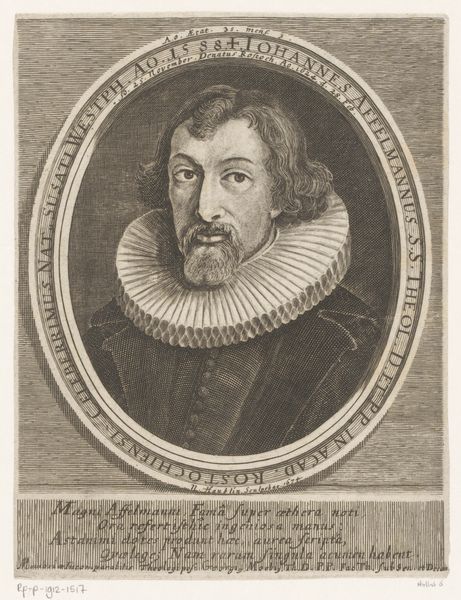
drawing, print, engraving
#
portrait
#
drawing
#
baroque
# print
#
engraving
Dimensions: 205 mm (height) x 147 mm (width) (plademaal)
Curator: Before us hangs "Erik Pontoppidan," a print crafted between 1673 and 1675 by Albert Haelwegh, now residing within the SMK—Statens Museum for Kunst. The technique appears to be engraving. Editor: It exudes a stern formality, doesn't it? The meticulous lines of the engraving create a certain... intensity in his gaze, almost confrontational. It’s monochrome, stripped back to line and shape. Curator: Indeed. Note the intricate construction of the oval frame and the precision of the lettering, a deliberate decision on the artist’s part to communicate specific messages. There is semiotic information aplenty here for decoding. Editor: The context is paramount. Pontoppidan was a prominent religious figure, so such elaborate visual presentation aligns with the period's hierarchical structures and use of portraiture to affirm authority. It underscores how power and prestige were visualized in the Baroque era. Curator: I am more intrigued by the internal contrasts within the engraving itself—the light falling upon his face offset by the darker, patterned elements of the vestments he wears. These internal formal tensions structure the image into what we witness today. Editor: But the coats of arms flanking his head offer compelling socio-political commentary. They denote lineage, influence, linking Erik Pontoppidan to specific socio-political systems of the era and highlighting the deep ties between religious and political authority. These symbols spoke volumes to the contemporary viewer. Curator: Yes, yet it all resolves to form and design. His ruff is an example of how repeated shapes of fine lace, organized within larger structures, can contribute to the totality. Editor: Ultimately, it reveals a deliberate articulation of authority and social position during the Baroque era—how imagery shapes our perception and solidifies hierarchies. Curator: And yet through line and light alone, this portrait has endured the ages. Editor: Illuminating a key intersection of art, authority, and societal beliefs.
Comments
No comments
Be the first to comment and join the conversation on the ultimate creative platform.
